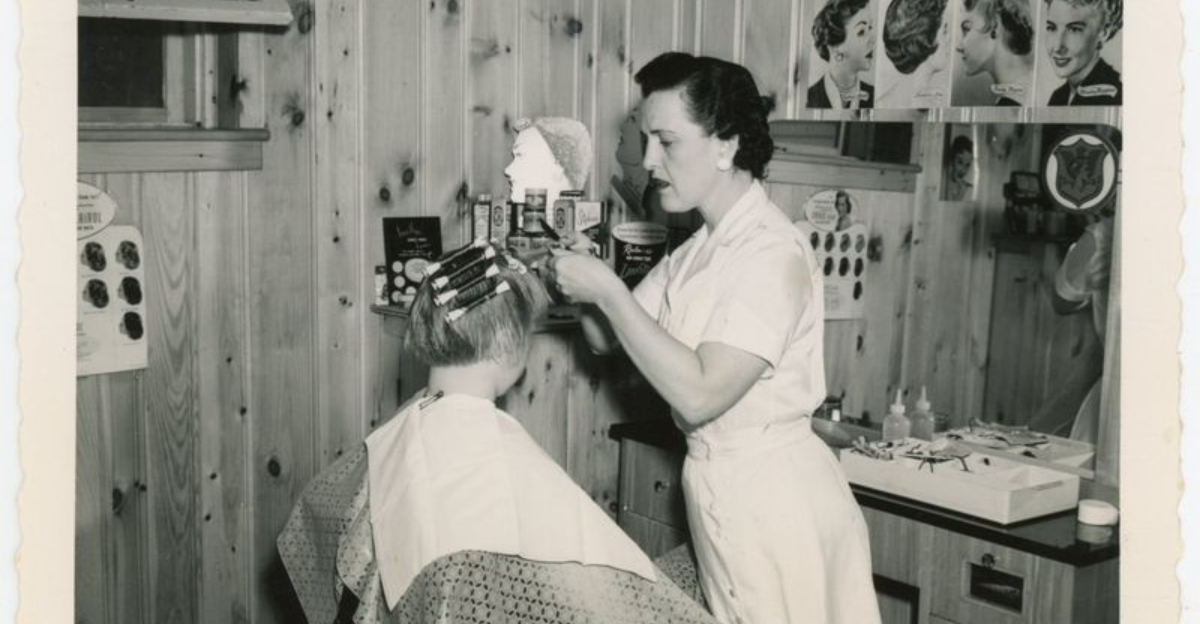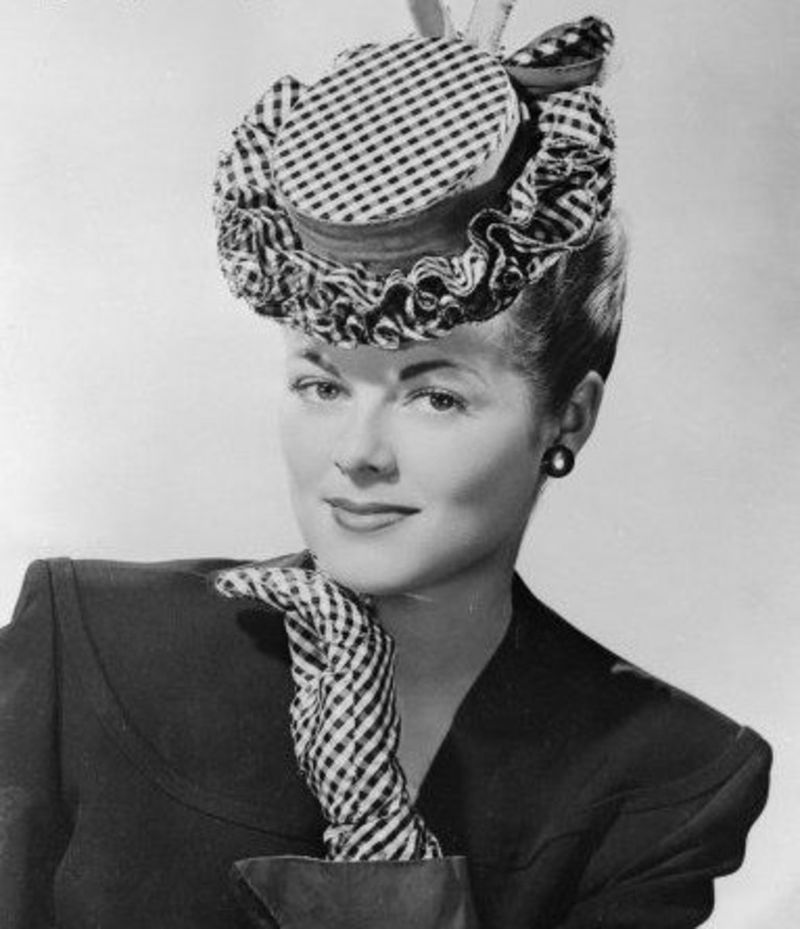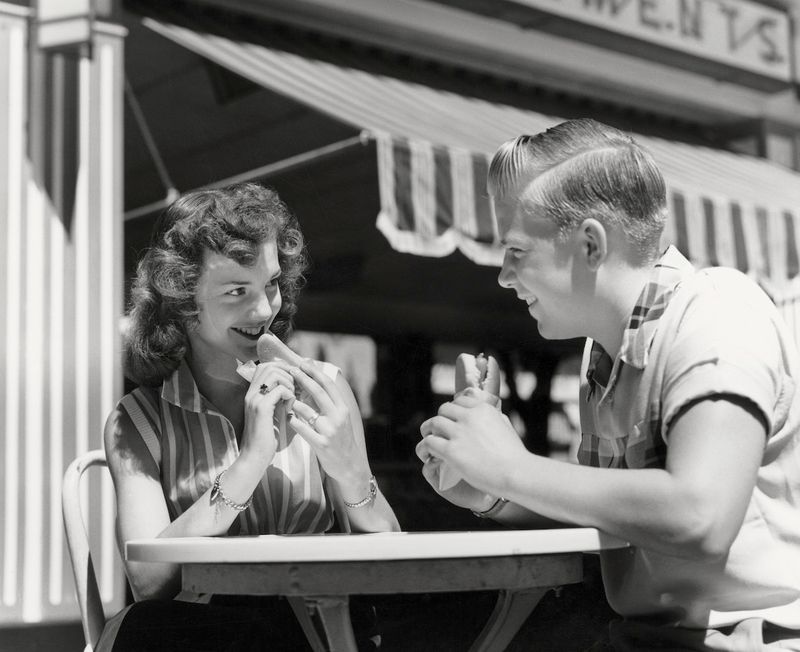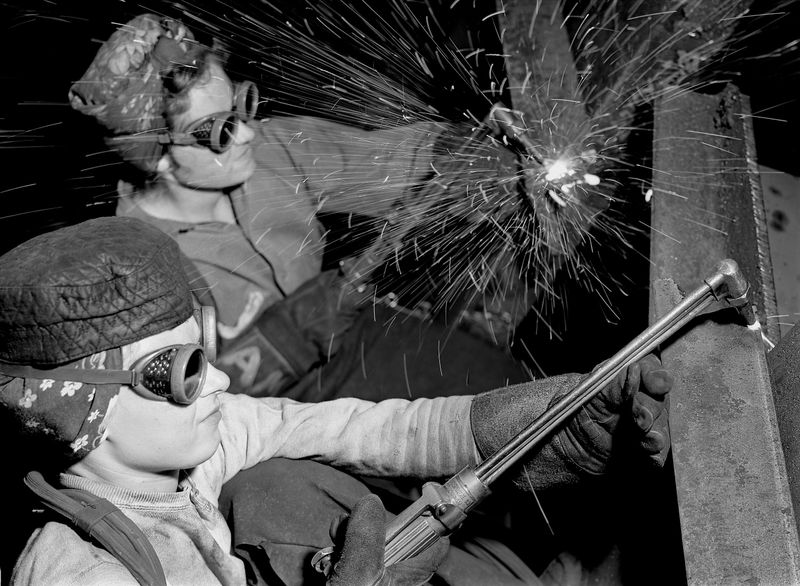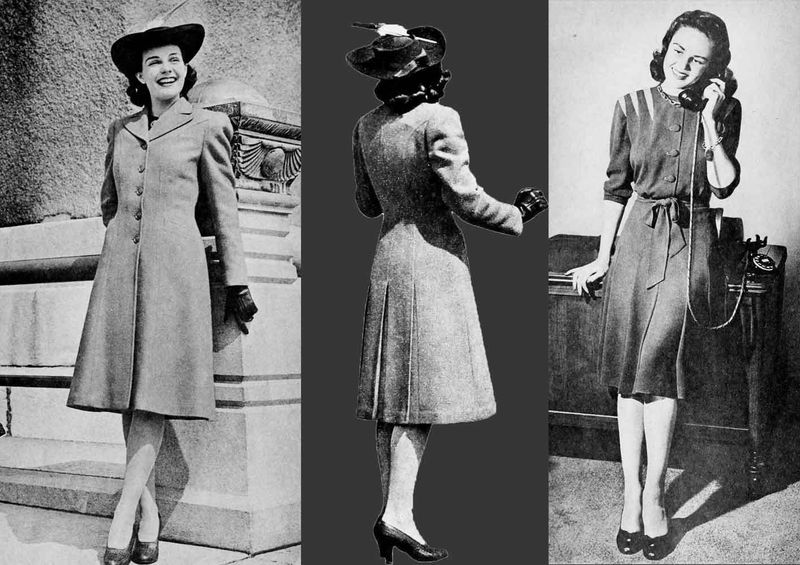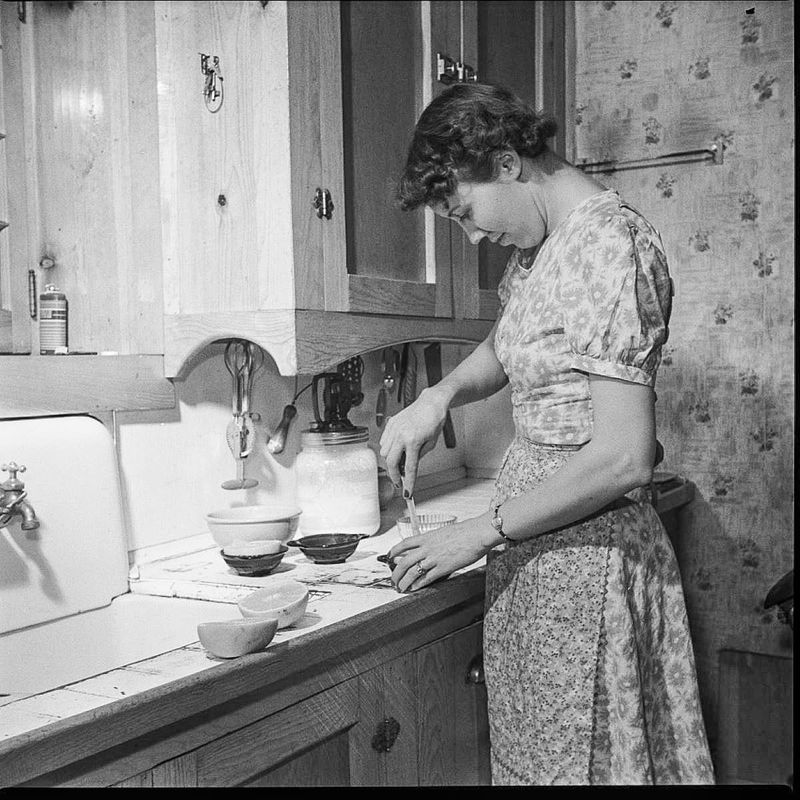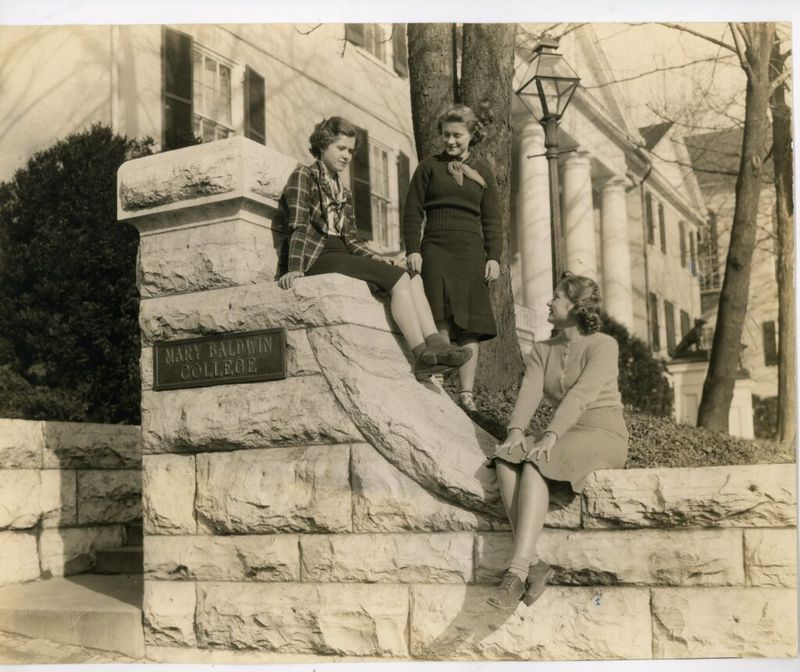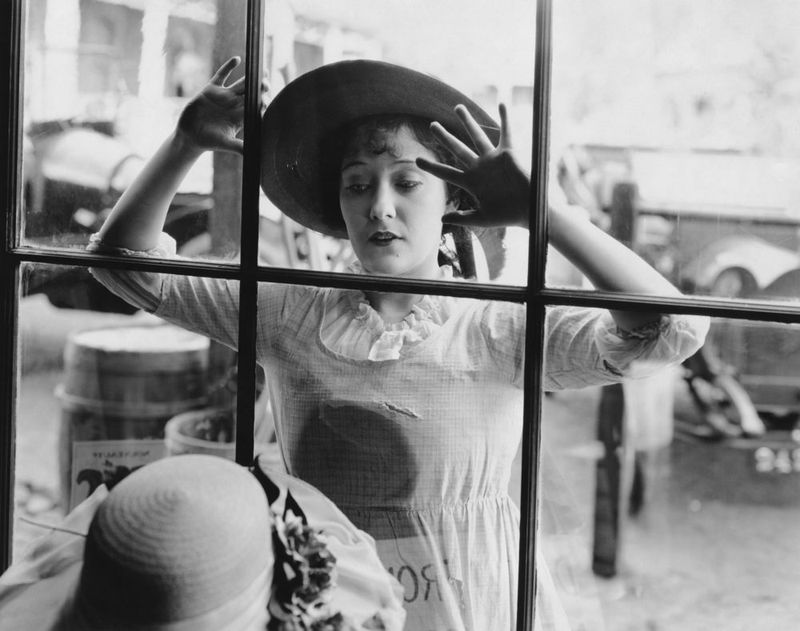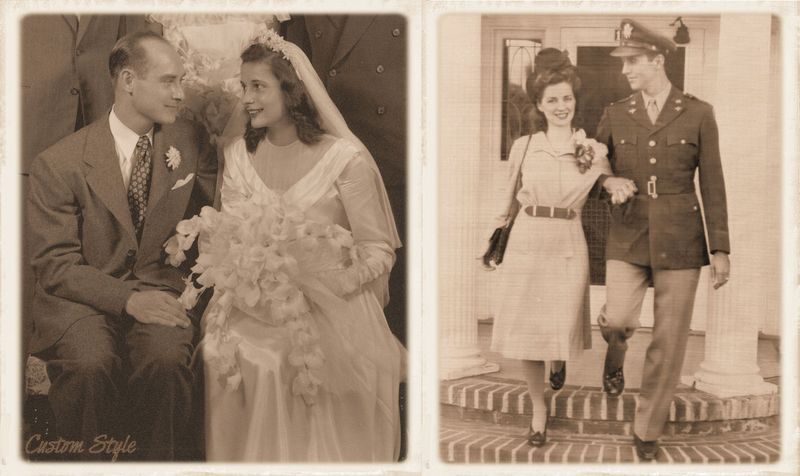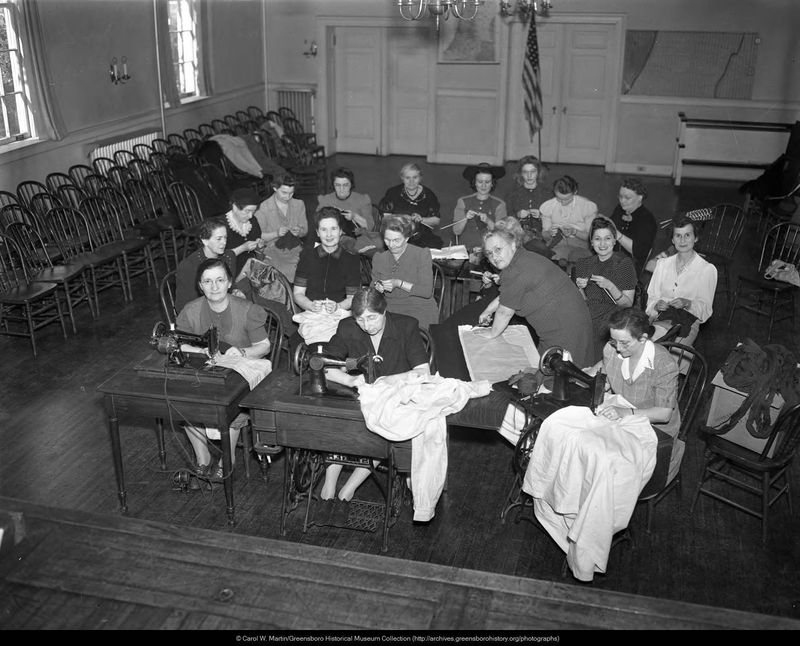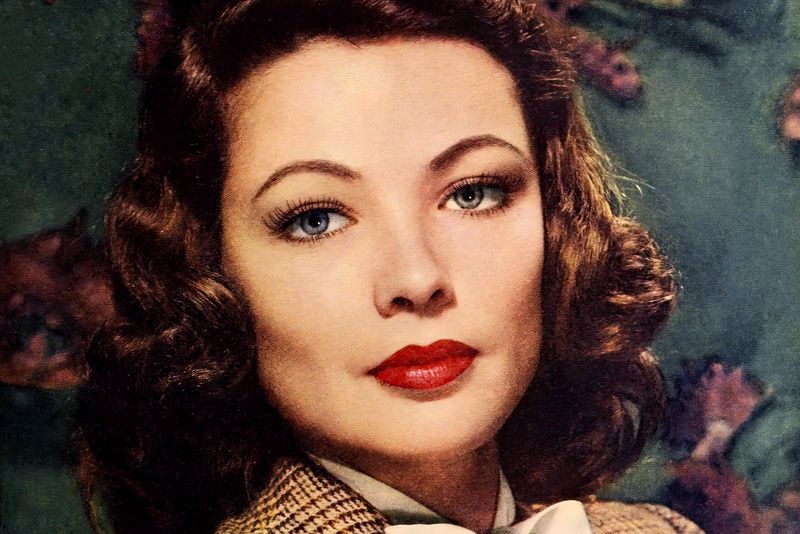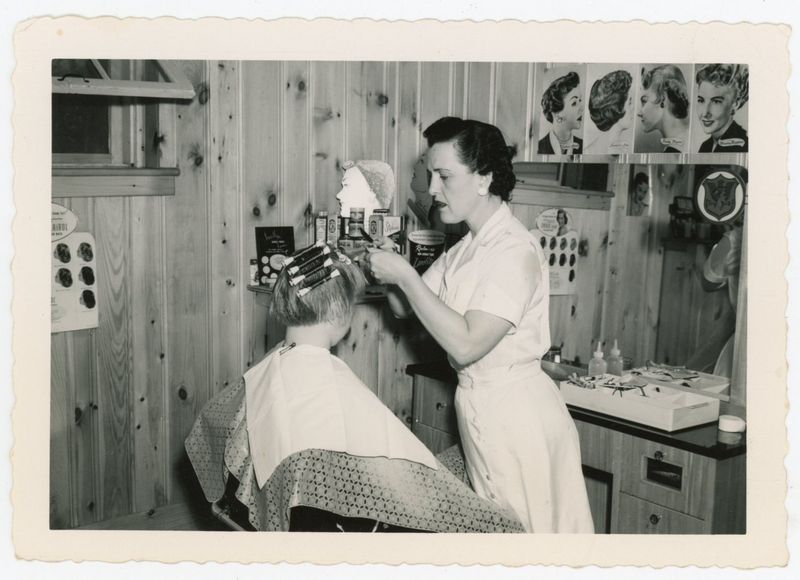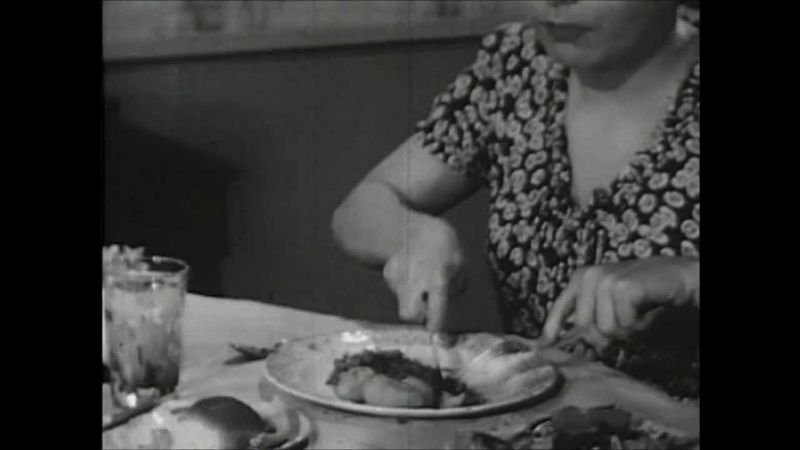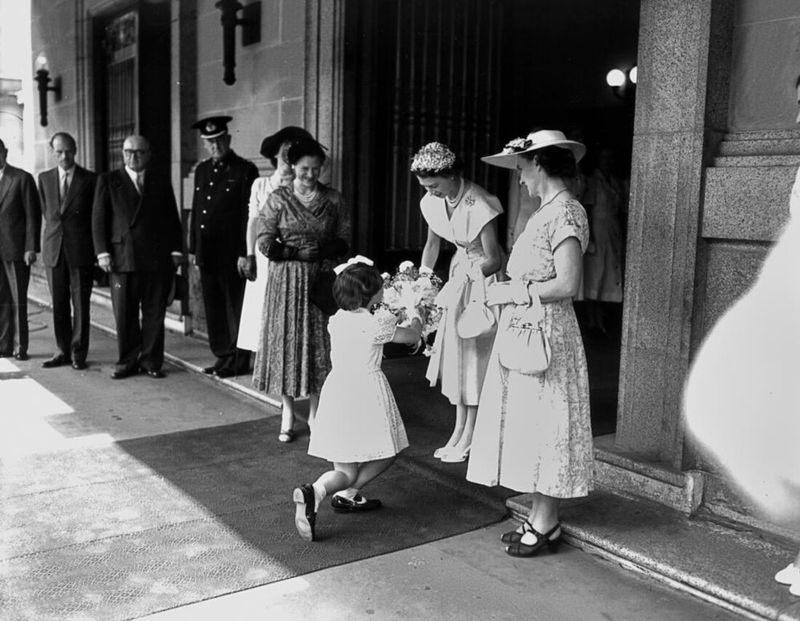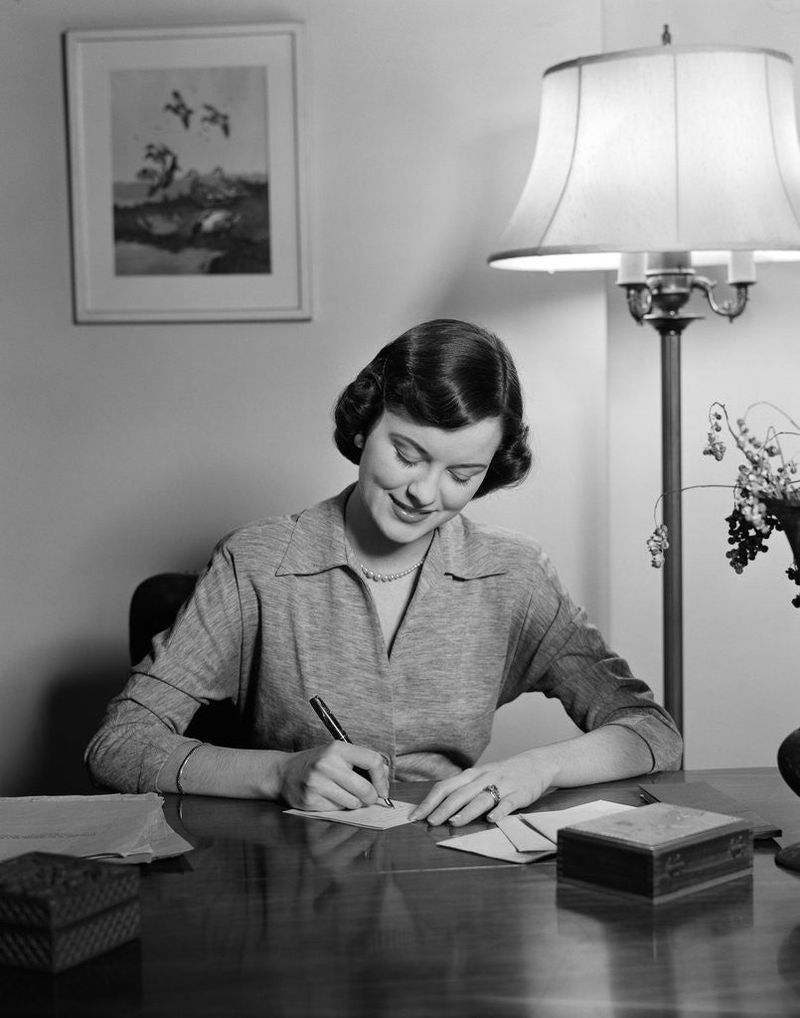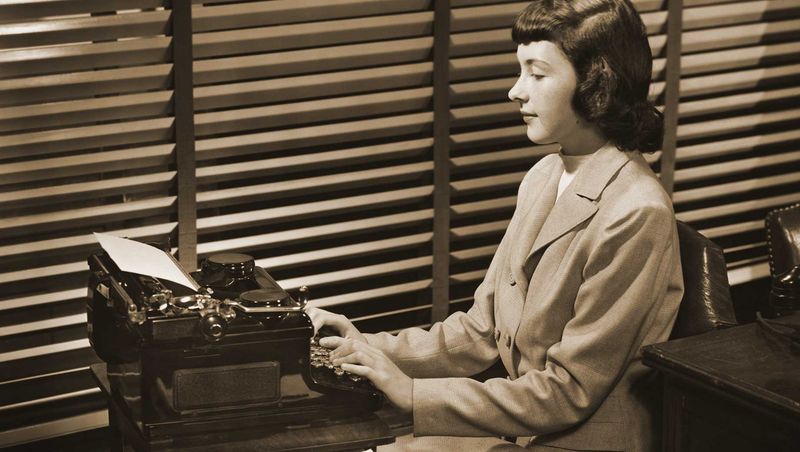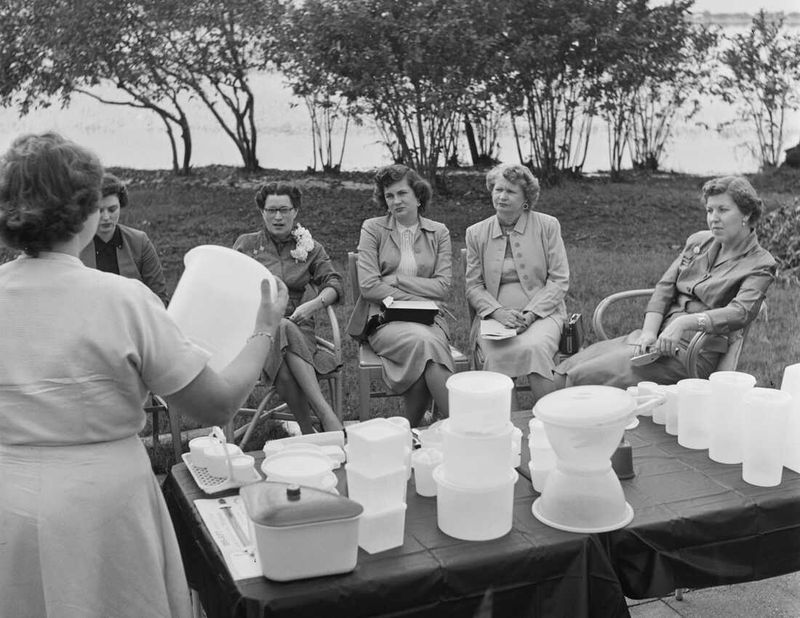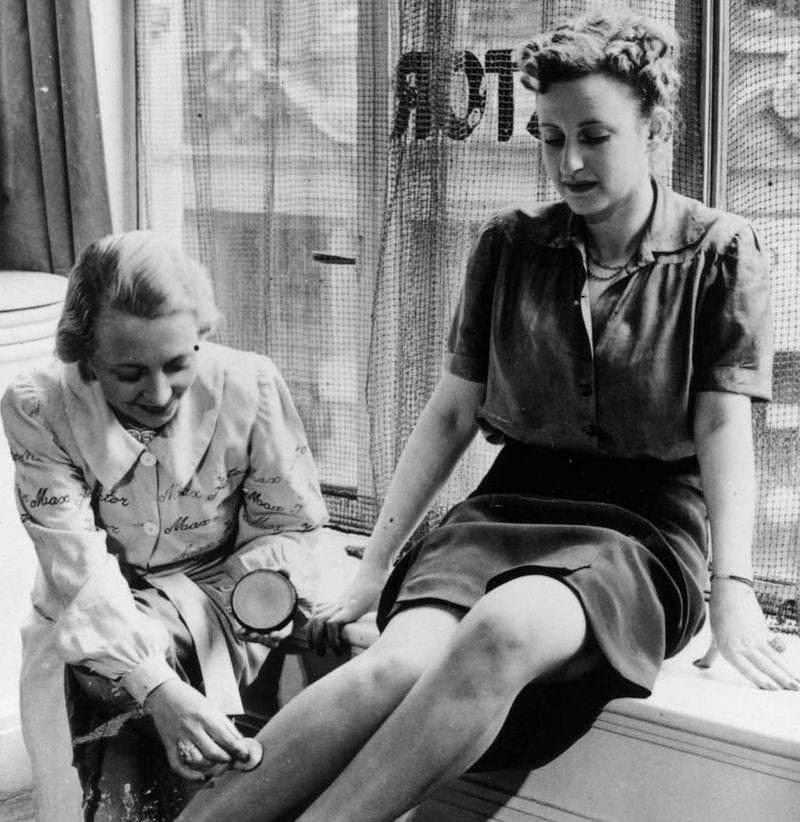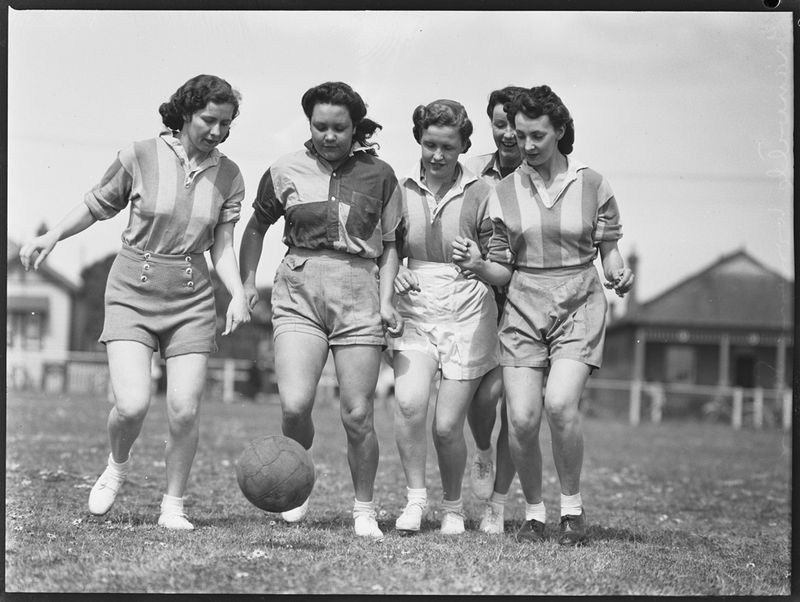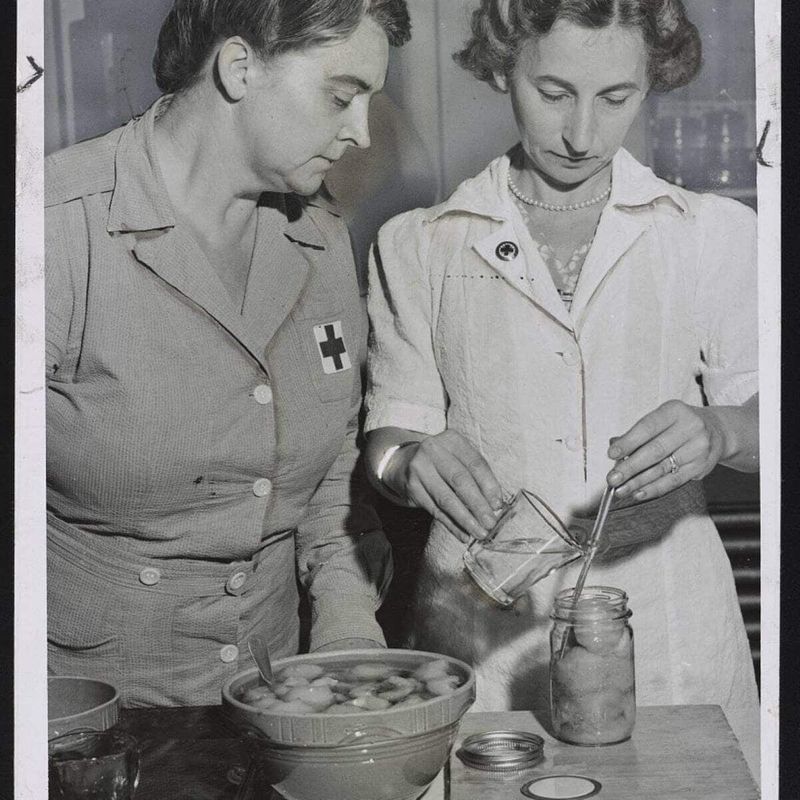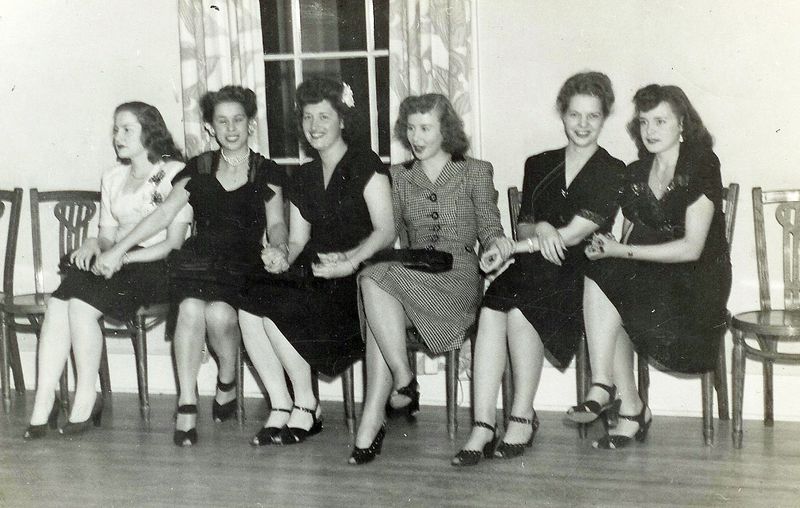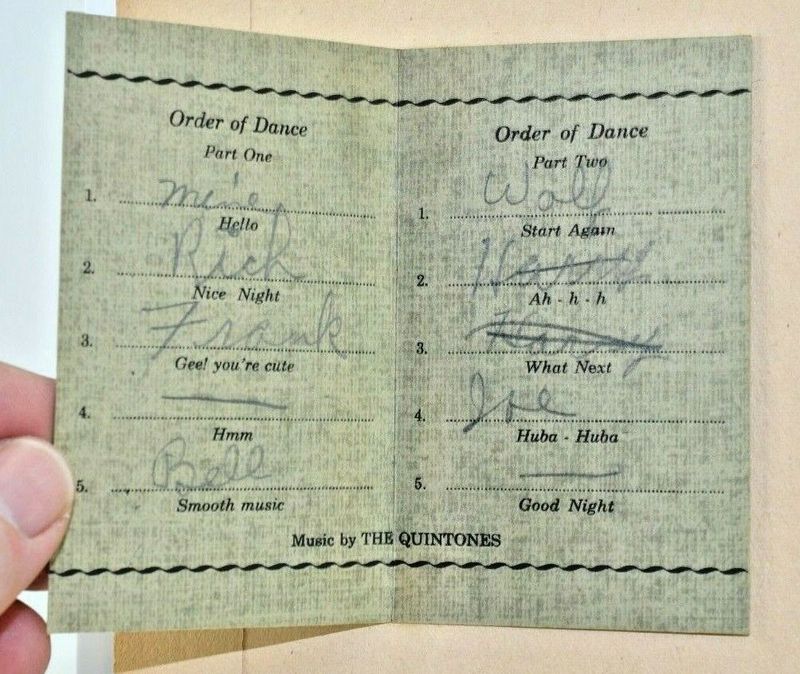The 1940s was a decade filled with societal norms and expectations that seem alien by today’s standards, especially for women.
From strict dress codes to limited professional opportunities, women of the ’40s navigated a world defined by rigid gender roles and cultural prescriptions.
Although many of these practices would be unthinkable today, they shaped the lives and experiences of women in that era.
1. Wearing Gloves in Public
For women in the 1940s, wearing gloves was not just a choice but a societal expectation. They donned gloves for various occasions, from church services to casual outings. These accessories symbolized elegance and propriety, reflecting a woman’s social standing.
Considered a crucial part of a lady’s ensemble, gloves were available in various styles and fabrics. Despite their popularity, they added an extra layer of inconvenience, especially in warmer weather.
Today, gloves have shifted to mere fashion statements or functional wear, with their obligatory nature long forgotten.
Yet, in the ’40s, they were indispensable.
2. Chaperoned Dates
During the 1940s, dating came with its own set of rules, and one prominent feature was the presence of a chaperone. Whether it was a family member or a trusted friend, this third wheel ensured the couple maintained appropriate behavior.
Chaperoned dates were a norm, reflecting the conservative and protective nature of society. For many young women, it was not just about companionship but safeguarding reputations.
Today, the concept of a chaperone seems outdated and unnecessary, with modern dating focusing on independence and personal choice. However, for ’40s women, it was part of their reality.
3. Wartime Factory Work
When World War II erupted, women stepped into roles traditionally reserved for men, including factory work. Known as “Rosie the Riveter,” they contributed significantly to the war effort, proving their capabilities beyond domestic confines.
These jobs offered a sense of independence and purpose, though they were often temporary. Despite facing discrimination, women showcased resilience and adaptability.
Today, women in the workforce is a standard, yet the ’40s marked a pivotal shift in gender roles and expectations. This era highlighted the transformative power of women during challenging times, a notion that continues to inspire.
4. Strict Dress Codes
Fashion in the 1940s was not just about aesthetics but adherence to strict societal norms. Women were expected to dress modestly, with dresses, stockings, and hats as staples.
These dress codes were a reflection of the era’s conservative outlook, limiting women’s self-expression. The rules dictated every aspect, from hemlines to accessories, enforcing conformity.
Today, fashion is a form of personal identity and creativity, far removed from the rigid expectations of the past. The evolution from ’40s fashion constraints to modern-day freedom highlights a significant cultural shift in societal norms.
5. Homemaking as a Full-time Job
In the 1940s, homemaking was considered a noble and full-time occupation for women. Managing the household, caring for children, and ensuring a well-maintained home were their primary responsibilities.
Despite the demanding nature of these tasks, they were often undervalued in a society that prioritized male-dominated careers.
Today, while many women still choose homemaking, the perception and value have transformed significantly.
Women now have the freedom to pursue diverse career paths, balancing personal and professional aspirations. The change underscores a broader recognition of women’s roles beyond traditional domestic confines.
6. Limited Educational Opportunities
Education opportunities for women in the 1940s were limited, focusing primarily on domestic sciences or secretarial skills. Colleges often prioritized male students, restricting women’s access to higher education.
For many women, educational pursuits were sidelined in favor of marriage and motherhood, stifling personal ambitions.
Today, education is a right for all, with women excelling in various fields and contributing significantly to academic and professional landscapes.
The transformation from the restricted educational paths of the ’40s to today’s inclusive environment showcases the progress in gender equality and empowerment.
7. Obligatory Hat Wearing
In the 1940s, a woman’s outfit was incomplete without a hat. This accessory was essential for public appearances, symbolizing status and sophistication. Women wore hats to church, social gatherings, and even casual outings, adhering to fashion etiquette.
Hats came in various styles, allowing some room for personal expression within rigid norms.
Today, hats are optional and no longer bear the same social weight, reflecting a change in cultural attitudes towards women’s attire.
The shift from obligatory hat-wearing to modern-day fashion freedom underscores evolving ideas about individual expression and identity.
8. Marriage as a Primary Goal
Marriage was often seen as the ultimate achievement for women in the 1940s. Societal norms emphasized finding a suitable husband, with many women marrying young.
This focus on matrimony limited women’s career prospects and personal growth, placing their worth in domestic success.
Today, the view of marriage has evolved, with women prioritizing personal goals and autonomy. While marriage remains significant, it is no longer the sole measure of success, reflecting a broader understanding of individual aspirations.
This shift highlights the changing dynamics of gender roles and personal fulfillment in contemporary society.
9. Attending Sewing Circles
Sewing circles were a staple of 1940s social life. Women gathered to sew, mend clothes, and create new garments. These circles were not just about needlework; they fostered community and camaraderie.
In an era of rationing, sewing was also a practical necessity, teaching valuable skills in resourcefulness.
Today, while sewing remains a hobby for some, the communal aspect has diminished, with fewer people gathering for such activities.
10. Conformity to Beauty Standards
Beauty standards in the 1940s were rigid and demanding. Women were expected to maintain a polished appearance, adhering to idealized notions of femininity.
This involved meticulous grooming, from makeup to hairstyles, often requiring considerable time and effort. The pressure to conform limited personal expression and individuality.
Today, beauty is celebrated in diverse forms, encouraging authenticity and self-acceptance.
The evolution from strict ’40s beauty norms to contemporary inclusivity reflects a broader cultural shift towards embracing diversity and breaking free from conventional standards. This journey highlights the importance of self-expression and personal identity.
11. Weekly Hair Salon Visits
Hair was a big deal in the 1940s. Women spent considerable time and money on weekly salon visits to maintain elaborate hairstyles. These trips were social events as much as personal grooming.
The hairstyles were not just about beauty; they represented status and sophistication. Women bonded over the latest styles and techniques.
Today’s busy schedules and changing beauty standards have reduced the frequency of such regular salon visits.
12. Social Etiquette Training
Social etiquette was a significant part of a woman’s upbringing in the 1940s. Women attended etiquette classes to learn proper behavior, manners, and social graces, which were deemed essential for personal and marital success.
These lessons emphasized conformity to societal expectations, often limiting self-expression.
Today, while manners remain important, the rigid standards of the past have relaxed. People are encouraged to be authentic and express individuality, reflecting a shift towards personal freedom over societal conformity.
This evolution underscores the changing perceptions of social conduct and personal identity.
13. Curtsey as a Greeting
In the 1940s, the curtsey was a common gesture for women, especially in formal settings. This act of politeness and respect was part of the social etiquette women were expected to master.
Though often seen as elegant, it reinforced traditional gender roles and expectations.
Today, greetings have evolved to be more casual and gender-neutral, reflecting societal changes in attitudes towards formality and gender norms.
The transition from curtseying to contemporary greetings highlights a broader cultural shift towards equality and simplicity in social interactions.
14. Handwritten Correspondence
The art of handwritten correspondence was a staple in the 1940s. Women often spent time crafting letters to maintain personal and familial connections, especially during wartime.
This form of communication required patience and skill, reflecting the era’s slower pace of life.
Today, digital communication dominates, offering instant and efficient ways to connect. While handwritten letters hold sentimental value, they are no longer a necessity, highlighting the dramatic transformation in how we communicate.
This shift underscores technological advancements and the changing dynamics of interpersonal relationships.
15. Limited Career Choices
Career options for women in the 1940s were often restricted to roles like secretaries, nurses, or teachers. Society encouraged women to pursue employment that aligned with traditional gender roles.
This limitation stifled ambition, preventing many from exploring diverse professional paths.
Today, women are breaking barriers across all industries, reflecting a significant evolution in workplace equality and opportunities.
The transformation from limited career choices to limitless possibilities demonstrates the progress in gender roles and the ongoing fight for equality and representation in all fields.
16. Hosting Tupperware Parties
Tupperware parties became a social phenomenon in the late 1940s. Women would host these gatherings to demonstrate the latest Tupperware products, turning their living rooms into mini-showrooms.
These parties were more than sales events; they were opportunities for women to socialize and share household tips. It was a unique blend of business and pleasure.
Today, the concept of hosting direct selling parties in one’s home has largely moved online, making these in-person gatherings a relic of the past.
17. Nylon Stockings Shortage
During World War II, nylon stockings were in short supply, leading women to improvise by applying makeup to their legs to mimic the appearance of stockings. This creative solution was born out of necessity, reflecting the resourcefulness of the era.
Stockings were a crucial part of a woman’s attire, emphasizing the importance placed on appearance.
Today, fashion flexibility allows for personal choice, with no such societal mandates on appearance.
The evolution from wartime improvisation to contemporary freedom of expression underscores the changing landscape of fashion and the resilience of women in the face of adversity.
18. Gender-Segregated Sports
Sports in the 1940s were heavily gender-segregated, with women often facing limited opportunities in athletics. Female participation was restricted, and societal expectations emphasized traditional femininity over physical prowess.
Women who pursued sports often faced stigma, despite their passion and talent.
Today, gender equality in sports has made significant strides, with women participating in and excelling across various disciplines. The progress from gender-segregated sports to inclusive athletic environments highlights the ongoing journey towards equality and recognition in the world of sports.
19. Rationing and Resourcefulness
Rationing during World War II demanded resourcefulness from women, who were responsible for managing household supplies with limited resources. Ration coupons dictated purchases, requiring creativity in meal planning and home management.
This era tested women’s ingenuity, as they navigated shortages with resilience.
Today, while resourcefulness remains a valued skill, the constraints of wartime rationing are a distant memory.
The evolution from rationing to modern-day abundance reflects the vast changes in consumer culture and the adaptability of women in meeting their families’ needs under challenging circumstances.
20. Propriety in Public Behavior
Women in the 1940s were expected to exhibit propriety in public behavior, adhering to stringent social norms. This included polite conversation, modesty, and reserved demeanor, reflecting the conservative values of the time.
Deviation from these norms often led to social repercussions, constraining personal freedom.
Today, public behavior is more relaxed and inclusive, celebrating individuality and diverse expressions.
The transition from rigid propriety to contemporary acceptance highlights the shift in societal attitudes and the importance of personal freedom and self-expression. This journey underscores the evolving nature of social interactions and gender roles.
21. Mandatory Dance Card Engagement
In the 1940s, attending a dance often required women to carry a “dance card.” These cards listed the evening’s dances and allowed women to pencil in names of male partners who requested dances in advance.
It was both a social obligation and a way to navigate the evening’s entertainment.
This practice dictated not only whom one danced with but also how women managed their social interactions.
Despite its organized nature, the dance card system limited spontaneity and reinforced gender norms. Today, the concept seems quaint, as social gatherings embrace freedom and self-expressio
